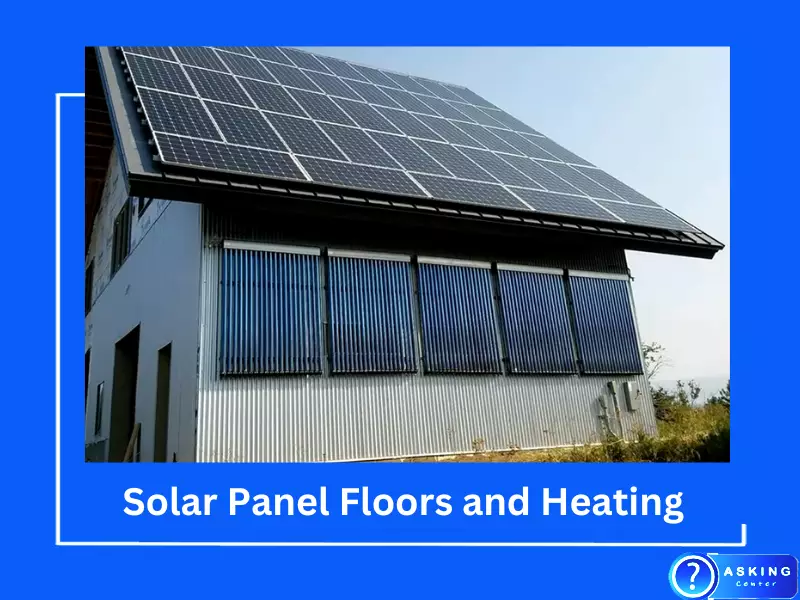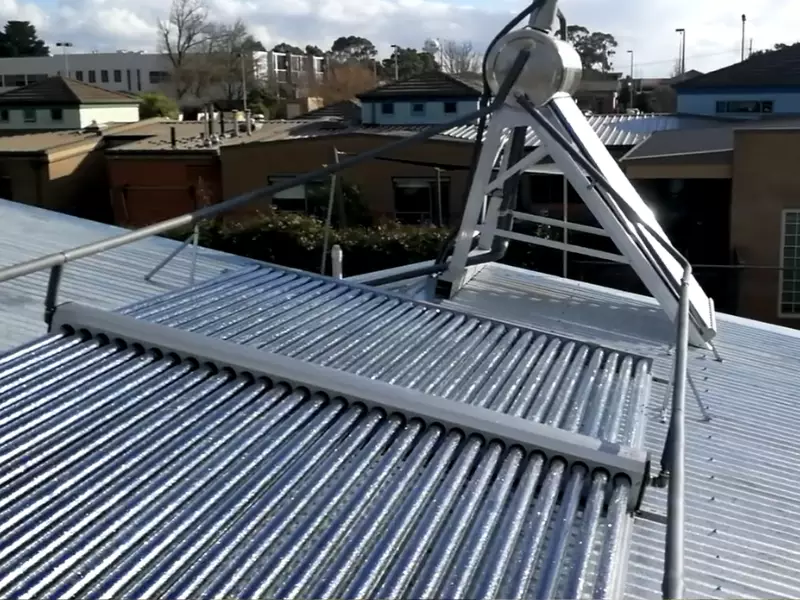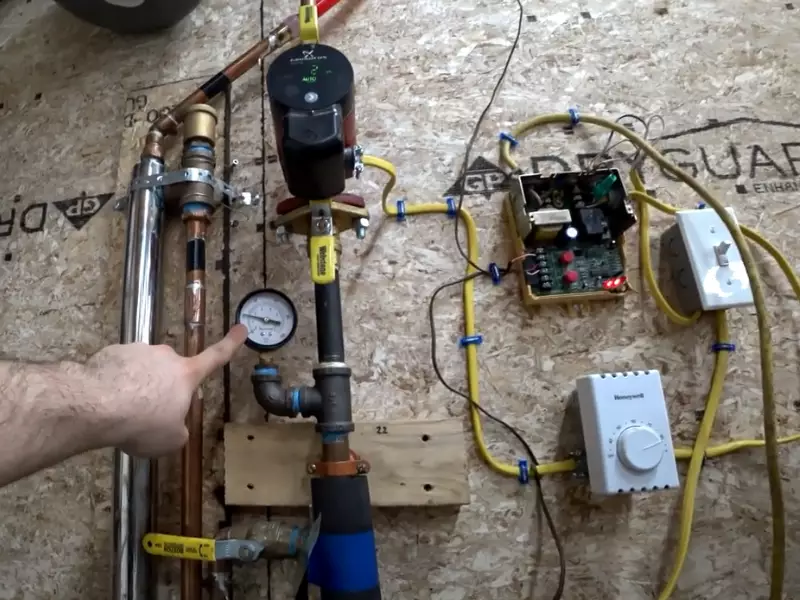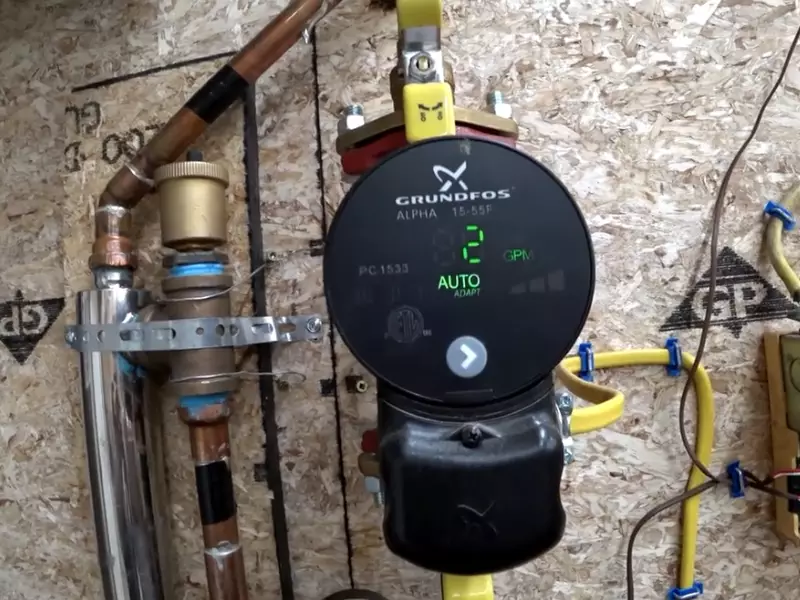In today’s world, renewable energy is not a luxury but a necessity. Among the various sources of renewable energy, solar power holds a unique position for its abundance and ease of harnessing. Solar panels are a common sight on rooftops, offering a greener alternative to conventional electricity sources. But, can these energy powerhouses be used for underfloor heating?
The answer is a resounding yes! Solar panels can indeed power underfloor heating systems, offering an efficient, cost-effective, and sustainable solution for your home heating needs. While the process may sound complex, it is achievable with the right knowledge and equipment, turning the power of the sun into cozy warmth beneath your feet.
Engaging with this comprehensive guide will offer you in-depth insights into solar panel floors and solar floor heating. Unravel the potential of solar power and underfloor heating, a dynamic duo that promises an environmentally friendly and comfortable living experience.
Understanding Solar Panels
Solar panels are a fantastic invention that has brought the power of the sun right into our daily lives. But how exactly do they work?

How Solar Panels Work
A solar panel is essentially a collection of solar (or photovoltaic) cells, which can be used to generate electricity through the photovoltaic effect. These cells contain a ‘p-n junction’ created by doping silicon layers. When sunlight (composed of energy particles called photons) hits these cells, it excites the electrons and pushes them into motion, thus generating an electric current.
Uses of Solar Panels
While many know solar panels as the go-to solution for green electricity, their use goes well beyond that. They’re utilized in a variety of scenarios, from powering homes and commercial buildings to charging batteries for electric vehicles. Moreover, solar panels can be used to heat homes, a concept that brings us to the core subject of this guide: solar-powered underfloor heating.
Can Solar Panels Run Underfloor Heating?
Solar panels can indeed power underfloor heating systems, and they do this remarkably well. To understand how it works, one must delve into the dynamics of underfloor heating.
Solar-powered underfloor heating employs the electricity generated by the solar panels to warm up a heating element embedded within the floor. It’s essentially a two-step process – harnessing solar energy and then converting this energy into heat.
The Concept of Underfloor Heating
Underfloor heating is a form of central heating that uses the floor to heat the room. The idea dates back to Roman times when they used hypocausts – a form of heating with warm air under the floors.
Overview of Underfloor Heating
Underfloor heating provides consistent heat across rooms, leading to a comfortable and luxurious feel. This heat uniformly radiates upwards from the floor, creating an even temperature profile from floor to ceiling. It’s an unobtrusive way to heat a room as it eliminates the need for radiators, giving more freedom for interior design and placement of furniture.
Benefits of Underfloor Heating
Underfloor heating has numerous benefits. It’s more efficient than radiators as it operates at a lower temperature while still heating the room effectively. It provides a more comfortable heat as it reduces cold spots and doesn’t cause air movement that could stir up dust. Underfloor heating is also quiet and requires minimal maintenance.
Types of Underfloor Heating Systems
There are two main types of underfloor heating systems – electric and hydronic. Both have their unique features and benefits, which we will explore next.
Electric Underfloor Heating Systems
Electric underfloor heating systems, also known as dry systems, use electrical cables or heating mats installed beneath the floor to generate heat. They are particularly suitable for renovations as they don’t raise the floor level significantly.
Example: Warmup DCM-PRO System, a popular choice in the market, is known for its energy-efficient heating and fast installation process.

Hydronic (Water) Underfloor Heating Systems
Hydronic systems, also known as wet systems, rely on heated water circulated through pipes installed under the floor. These systems are typically more energy-efficient and better for larger areas or whole-house installations.
Example: The REHAU Radiant Heating System is renowned for its efficiency and consistency in heat distribution. This system operates at lower temperatures, reducing energy consumption and thus being an eco-friendly choice.
Can Solar Panels Be Used For Heating?
Solar panels are not just for producing electricity. They can indeed be used for heating purposes and offer an environmentally friendly alternative to conventional heating methods.
Solar Panels in Heating Applications
The use of solar panels in heating applications is not a new concept. In addition to providing electricity, solar energy has been used for centuries for heating purposes. For instance, solar thermal collectors, a type of solar panel designed specifically for heating applications, are used to heat water or air for use in homes and commercial buildings.
Solar panels can also be used in conjunction with heat pumps to heat homes. The electricity produced by the solar panels powers the heat pump, which extracts heat from the outside air, even in cold weather, and uses it to heat the home.
Case Study: Solar Powered Heating
A good example of solar panels being used for heating is the Drake Landing Solar Community in Alberta, Canada. This community is composed of 52 homes, all of which are heated by a district system that derives 90% of its energy from the sun. The system uses an array of solar thermal collectors and an underground thermal storage system to provide heat to each home.
How Does Solar Underfloor Heating Work?
Solar underfloor heating combines the technology of solar panels and underfloor heating to create an efficient and sustainable heating system.
Harnessing Solar Energy
The process starts with the solar panels, which are installed on the roof of the building. These panels absorb sunlight and convert it into direct current (DC) electricity. This DC is then converted into alternating current (AC) using an inverter. This AC electricity is then used to power the underfloor heating system.
The Underfloor Heating Process
In electric underfloor heating systems, the AC electricity directly heats up electric wires installed beneath the floor. In hydronic underfloor heating systems, the electricity is used to heat water in a boiler. This hot water is then circulated through pipes installed beneath the floor.
Comparison Between Electric and Hydronic Underfloor Heating
When choosing between electric and hydronic underfloor heating, various factors need to be considered. Let’s delve into the specifics of efficiency, installation, cost-effectiveness, and sustainability for each system.
Efficiency
Hydronic systems are generally more efficient than electric systems for large spaces or whole-house applications. They operate at a lower temperature yet distribute heat more evenly. However, electric systems might be more suitable for smaller spaces or individual rooms due to their quick response time.
Installation
Electric underfloor heating systems are easier and quicker to install. They require less construction work, making them suitable for retrofitting in existing rooms. On the other hand, hydronic systems require more extensive work, including the installation of a boiler and the laying of pipes. Hence, they are better suited for new constructions or major renovations.

Cost-Effectiveness
The initial installation cost of electric underfloor heating systems is typically lower than hydronic systems. However, in the long run, hydronic systems can be more cost-effective due to their lower operating costs, especially if they are powered by a renewable energy source like solar panels.
Sustainability
Both types of underfloor heating systems can be sustainable if powered by a renewable energy source. However, hydronic systems, when combined with solar panels or other green energy sources for heating the water, can offer a higher level of sustainability. They operate at lower temperatures and provide an efficient way of heating, making them a great choice for environmentally-conscious homeowners.
Indirect or Direct Heating using Solar
Solar underfloor heating systems can be classified into two main categories: direct and indirect. Both have their unique features, and the choice between the two largely depends on specific needs and circumstances.
Direct Solar Underfloor Heating
In direct solar underfloor heating systems, the energy harnessed from the sun is directly used to heat the underfloor heating system. Here, solar thermal collectors absorb solar energy and transfer it directly to the floor system.
This method is highly efficient as it eliminates the need for energy conversion. However, it requires a well-designed and carefully planned system to ensure that the heat is adequately distributed across the floor.
Indirect Solar Underfloor Heating
In contrast, indirect solar underfloor heating systems use solar panels to generate electricity, which is then used to heat the underfloor system. It could be an electric underfloor system where the electric heating elements are powered by solar-generated electricity. Or it could be a hydronic underfloor system where a solar-powered water heater heats the water that is circulated through the floor pipes.
While indirect systems may have some energy loss during the conversion processes, they have the advantage of being able to store excess electricity in the power grid or in a battery system for later use.
Factors Influencing the Effectiveness of Solar Underfloor Heating
Several factors affect the effectiveness of solar underfloor heating systems. A deep understanding of these factors will help in designing and implementing an efficient system.
Climate
The amount of sunlight available is crucial for the efficiency of the system. Locations with more sunny days throughout the year naturally benefit more from solar-powered systems.
Solar Array Size
The size of the solar array directly affects the amount of electricity that can be generated. A larger array can generate more power, improving the efficiency of the system.
Grid-tied vs. Off-Grid
Grid-tied systems can feed excess power back into the grid and draw power when needed. Off-grid systems, on the other hand, need sufficient battery storage to store excess power and use it when solar power is not available.

Choosing the Best Underfloor Heating System
The choice of the best underfloor heating system depends on various factors, including the size of the room, installation complexity, cost, and the available energy source.
Analyzing Your Needs
The first step to choosing the best underfloor heating system is to analyze your specific needs. Consider the size and type of the area you wish to heat. Also, consider your budget and the resources you have at hand.
Consulting a Professional
Considering the technicalities involved, it is advisable to consult with a professional before making a decision. They can help you evaluate your needs and suggest the best solution.
Solar Radiant Floor Heating
As we delve deeper into the realm of solar-powered underfloor heating, it’s worth taking a moment to understand solar radiant floor heating. This powerful combination of solar energy and radiant heating technology can bring about a significant difference in the comfort and energy efficiency of your home.
Understanding Solar Radiant Floor Heating
Solar radiant floor heating operates on the same principles as other underfloor heating systems, but with one key distinction – it is powered entirely by solar energy.
A well-designed solar radiant floor heating system is capable of providing a majority, if not all, of the heating required for a home, making it an excellent option for those seeking to reduce their carbon footprint and energy bills.
Benefits of Solar Radiant Floor Heating
Solar radiant floor heating carries a host of benefits, from increased comfort and improved air quality to significant energy savings and reduced environmental impact. By harnessing the power of the sun, these systems transform your home into a warm, comfortable haven, all while being kind to the planet.
Design Considerations for Solar Radiant Floor Heating
Designing a solar radiant floor heating system involves careful planning to ensure optimal performance. It’s important to factor in the location, solar availability, floor construction, and insulation levels of your home. Working with a professional will ensure the system is perfectly tailored to your home and needs.
Implementing Solar Underfloor Heating In Your Home
So, how does one go about integrating solar underfloor heating into their home? Here are some steps to guide you through the process:
Assess Your Home’s Compatibility
Before considering installing a solar underfloor heating system, evaluate your home’s compatibility. Check the orientation and angle of your roof for solar panel installation. Verify whether your floor structure can accommodate underfloor heating. Also, make sure your local building regulations allow for such modifications.
Work With A Specialist
When you’ve decided to proceed, work with a specialist in solar underfloor heating. They can provide expert advice, design the system to fit your needs, and handle the installation process.
Maintenance And Upkeep
Once your system is up and running, it will require minimal maintenance. However, regular check-ups by a professional can ensure your system is running efficiently and lasts longer.
Conclusion
Solar underfloor heating is more than just a trend. It’s a testament to our technological advancements and commitment to a sustainable future. Harnessing the sun’s energy to create a warm, comfortable space is a beautiful blend of nature and technology. As this guide shows, making the switch to solar underfloor heating is a decision that pays off in comfort, cost savings, and a reduced carbon footprint.
